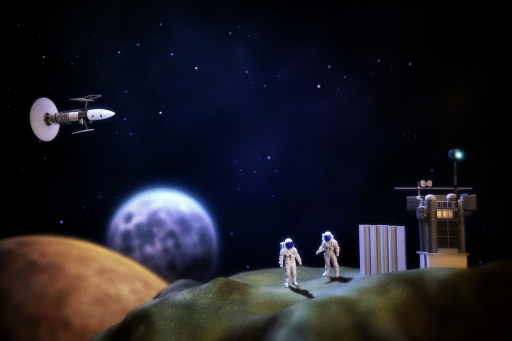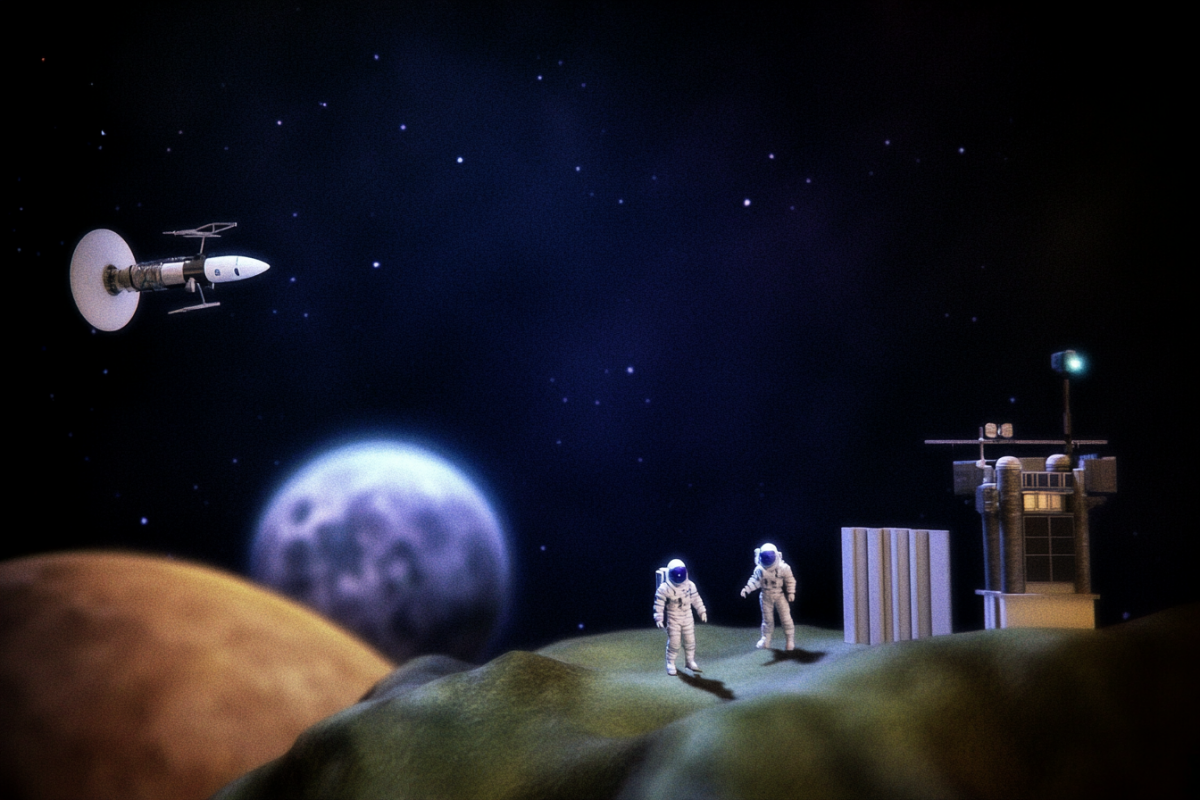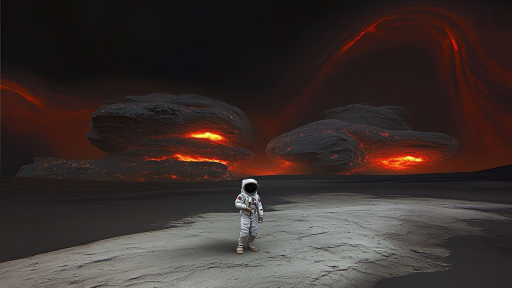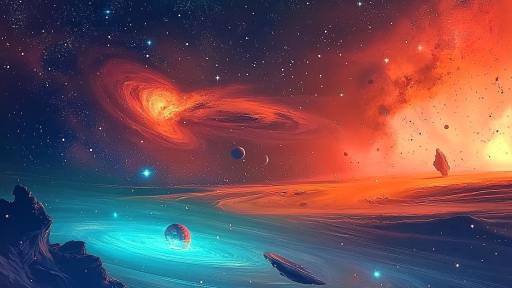
Space exploration has pushed the boundaries of what humanity once thought was impossible. From the first steps on the Moon to spacecraft venturing beyond our solar system, these historic achievements have redefined our understanding of the cosmos. Every mission, every discovery, and every technological leap brings us closer to uncovering the universe’s greatest mysteries. These incredible feats of space exploration stand as milestones in human history, proving that the impossible is only a challenge waiting to be conquered.
The Moon Landing – One Small Step, One Giant Leap

On July 20, 1969, Neil Armstrong and Buzz Aldrin became the first humans to set foot on the Moon during the Apollo 11 mission. Their iconic words, “That’s one small step for man, one giant leap for mankind,” echoed across history as the world watched in awe. The mission proved that humans could leave Earth, walk on another celestial body, and return safely. This monumental achievement paved the way for future lunar exploration and dreams of venturing even farther into space.
The Launch of Sputnik – The Space Age Begins

In 1957, the Soviet Union launched Sputnik 1, the first artificial satellite, marking the beginning of the space age. This small, beeping sphere orbited Earth for 21 days, sending signals that were picked up around the world. The success of Sputnik triggered the space race, pushing nations to accelerate their exploration of the cosmos. It was proof that humanity had taken its first step beyond our planet and into the vast unknown.
The First Human in Space – Yuri Gagarin’s Historic Flight

On April 12, 1961, Yuri Gagarin, a Soviet cosmonaut, became the first human to travel into space aboard Vostok 1. His journey lasted just 108 minutes, but in that time, he orbited Earth and cemented his place in history. As he gazed at our planet from above, he famously said, “I see Earth! It is so beautiful!” His mission proved that humans could survive the harsh environment of space and inspired generations of astronauts to follow.
The First Woman in Space – Valentina Tereshkova’s Groundbreaking Flight

In 1963, Valentina Tereshkova became the first woman to travel to space aboard Vostok 6. She spent nearly three days in orbit, completing 48 orbits around Earth, more than all previous spaceflights combined at the time. Her historic mission shattered gender barriers in space exploration and paved the way for future female astronauts. Decades later, she remains an icon of courage and determination.
The First Spacewalk – Stepping into the Void

On March 18, 1965, cosmonaut Alexei Leonov became the first person to conduct a spacewalk, stepping out of his Voskhod 2 spacecraft into the vastness of space. His 12-minute EVA (extravehicular activity) was both groundbreaking and terrifying—his suit inflated in the vacuum of space, making it difficult for him to return to his capsule. This daring mission proved that astronauts could work outside their spacecraft, a critical step for future lunar and deep-space missions.
The Apollo 13 Rescue – A Triumph Over Disaster

In 1970, Apollo 13 was destined for the Moon, but an oxygen tank explosion turned it into a fight for survival. With limited power, oxygen, and resources, NASA engineers and astronauts worked tirelessly to bring the crew home safely. The phrase “Houston, we have a problem” became legendary, symbolizing human resilience in the face of crisis. The mission, though it never landed on the Moon, remains one of the greatest feats of space ingenuity and problem-solving.
The First Space Station – Living in Space

The Soviet Union launched the first-ever space station, Salyut 1, in 1971, marking the beginning of long-term human habitation in space. Astronauts aboard tested the effects of microgravity on the human body and conducted experiments in orbit. This achievement laid the foundation for future space habitats like the International Space Station (ISS), proving that humans could live and work in space for extended periods.
Voyager 1 – Humanity’s First Message to the Stars

Launched in 1977, Voyager 1 became the first human-made object to enter interstellar space, venturing beyond our solar system. The spacecraft carries the Golden Record, a time capsule filled with sounds and images representing Earth’s diversity, intended for any intelligent life that might one day find it. Decades later, Voyager 1 continues to send signals, traveling farther than any other spacecraft in history.
The Mars Rovers – Pioneers of the Red Planet

In 2004, NASA’s Spirit and Opportunity rovers landed on Mars, beginning a new era of planetary exploration. Designed to last only 90 days, Opportunity exceeded expectations, surviving for nearly 15 years and revolutionizing our understanding of Mars. These rovers discovered evidence of ancient water, paving the way for future human missions to the Red Planet.
The Hubble Space Telescope – Unveiling the Universe

Since its launch in 1990, the Hubble Space Telescope has captured breathtaking images of the cosmos, revealing galaxies billions of light-years away. Its discoveries have reshaped our understanding of black holes, exoplanets, and the age of the universe. Hubble continues to provide humanity with stunning cosmic views, showing us just how vast and mysterious the universe truly is.
The First Landing on a Comet – Rosetta’s Historic Mission

In 2014, the Rosetta spacecraft became the first mission to land a probe on a comet, marking a historic achievement in space exploration. The Philae lander touched down on Comet 67P, sending back images and data that gave scientists unprecedented insight into the early solar system. This mission was a groundbreaking step toward understanding the origins of comets and their role in the formation of planets.
The First Image of a Black Hole – A Window into the Unknown

In 2019, the Event Horizon Telescope (EHT) captured the first-ever image of a black hole, revealing the glowing ring of light surrounding the supermassive black hole at the center of the Messier 87 galaxy. This discovery confirmed Einstein’s theory of general relativity and provided the world with a glimpse of one of the universe’s most mysterious objects.
The James Webb Space Telescope – A New Era of Cosmic Discovery

Launched in 2021, the James Webb Space Telescope (JWST) is the most powerful space observatory ever built, capable of looking back in time to the birth of the first galaxies. Unlike Hubble, JWST operates in infrared, allowing it to see through cosmic dust and into the most distant reaches of the universe. Its first images revealed breathtaking details of exoplanets, star-forming nebulae, and the oldest galaxies ever seen. This telescope is set to rewrite everything we know about the cosmos.
SpaceX and the Era of Reusable Rockets

Space exploration changed forever when SpaceX successfully launched and landed reusable rockets, dramatically reducing the cost of space travel. With the Falcon 9 and Starship, the dream of commercial spaceflight and interplanetary missions became a reality. This innovation paved the way for Mars colonization, Moon bases, and private space travel, pushing humanity closer to becoming a multi-planetary species.
The Search for Alien Life – The Kepler and TESS Missions

For decades, astronomers have searched for Earth-like planets beyond our solar system, and thanks to the Kepler and TESS space telescopes, we’ve discovered thousands of exoplanets. Some of these worlds orbit in the habitable zone, meaning they could host liquid water—and possibly life. With upcoming missions to scan for biosignatures and alien atmospheres, the question of whether we are alone in the universe might soon be answered.
What’s Next for Space Exploration?

The journey into space is far from over. With upcoming missions to Mars, plans for a permanent Moon base, and the search for life beyond Earth, humanity is only beginning to explore the vastness of the cosmos. Every new discovery builds on the achievements of the past, pushing us further into the unknown. The question isn’t whether we will go farther—it’s how soon.





